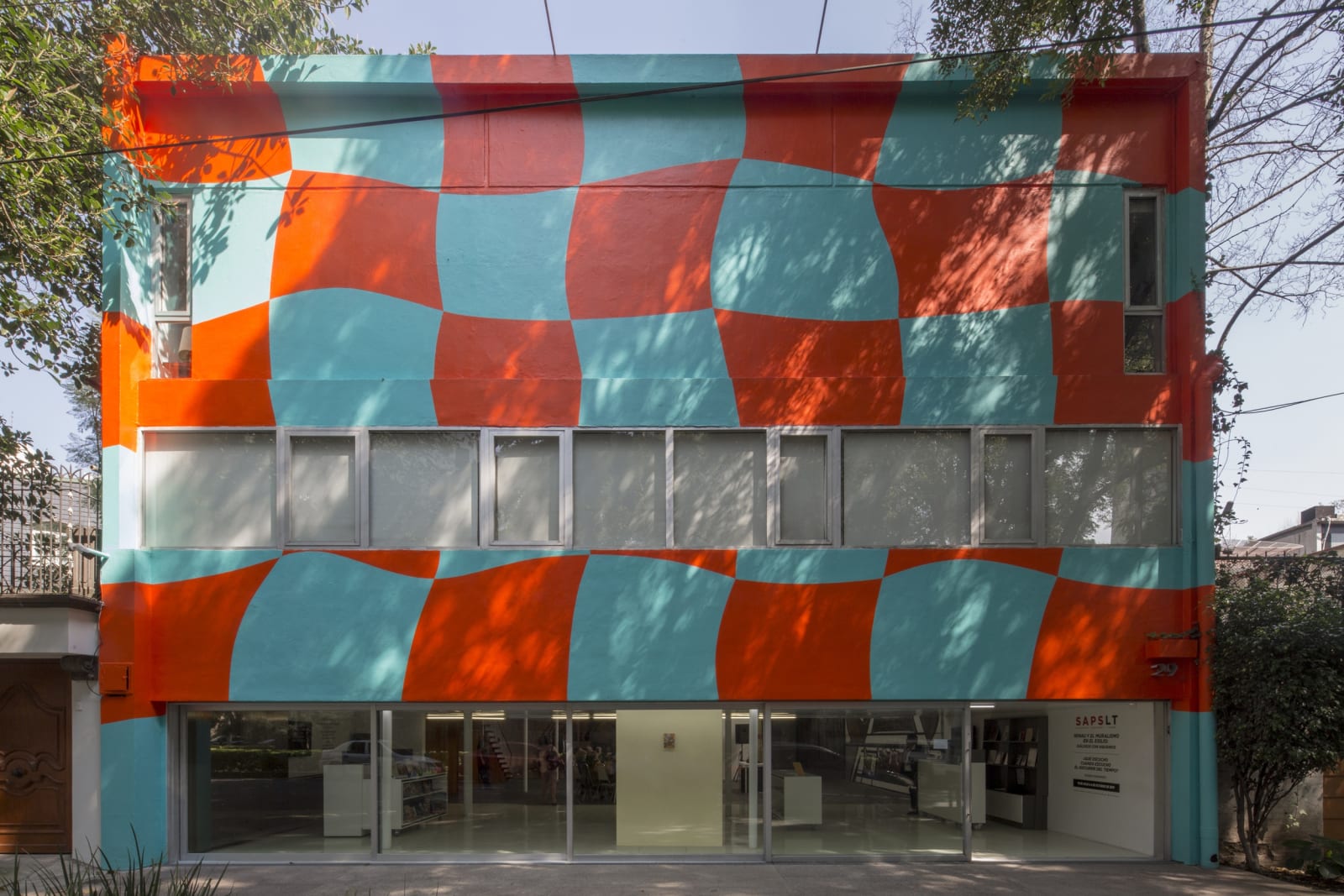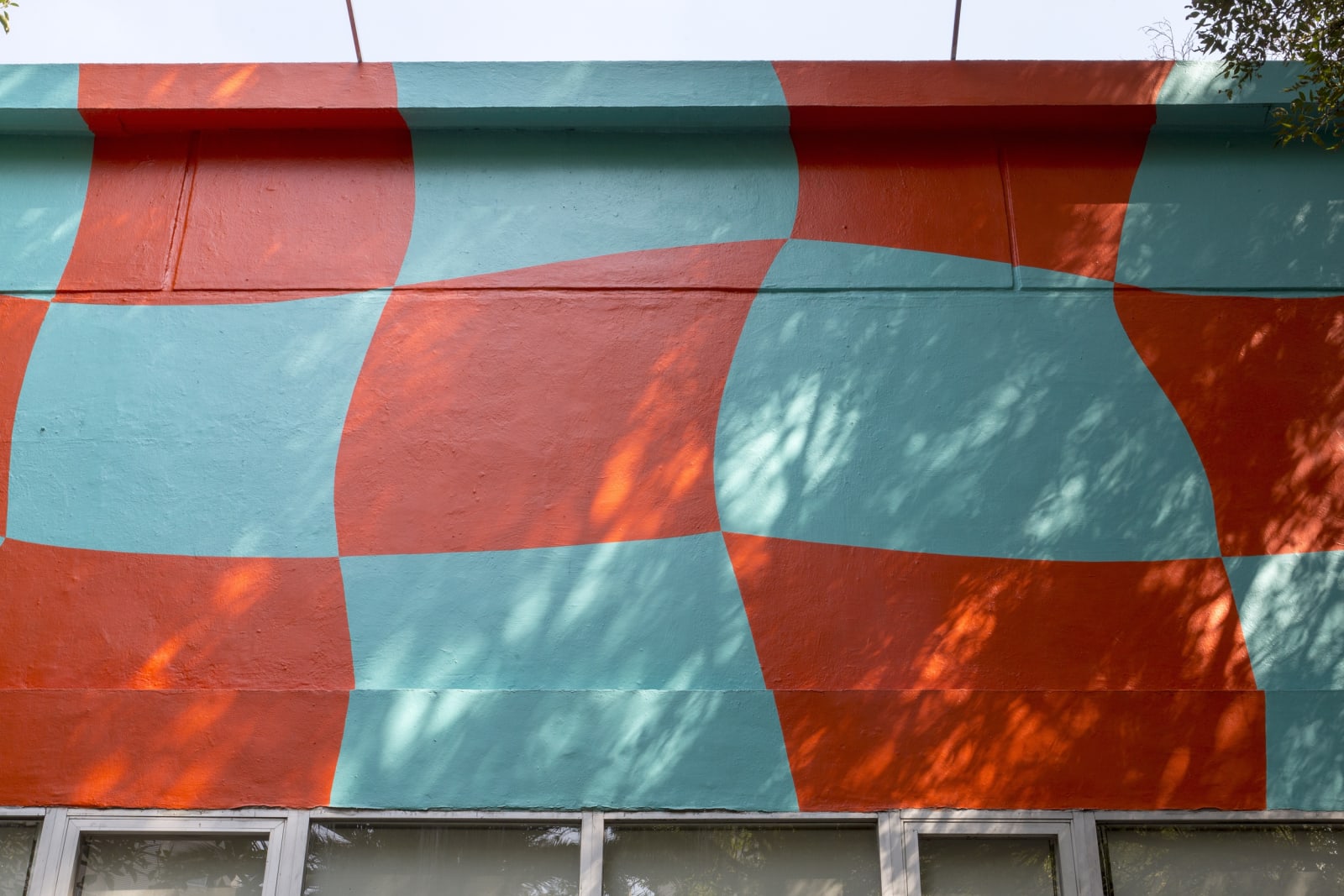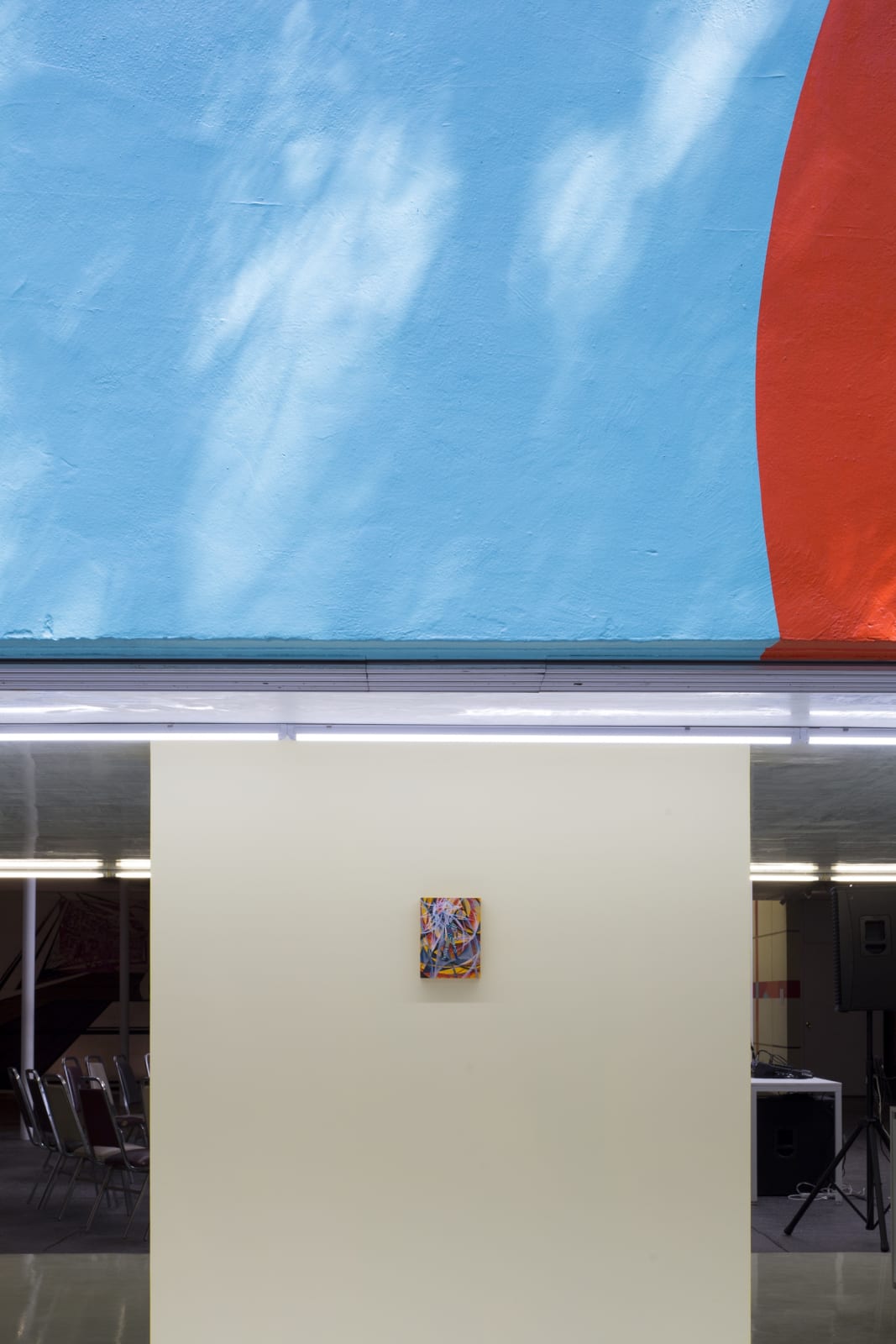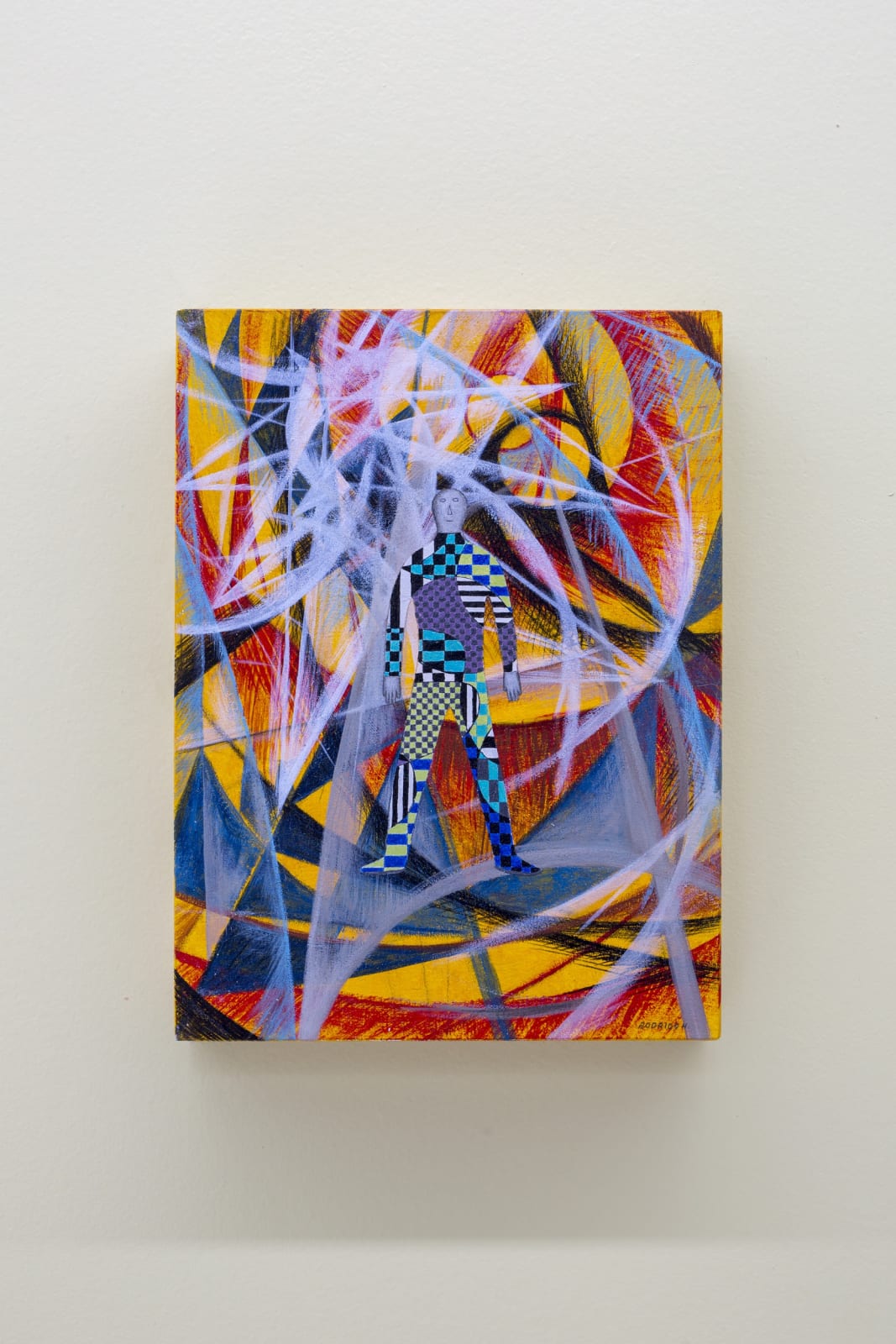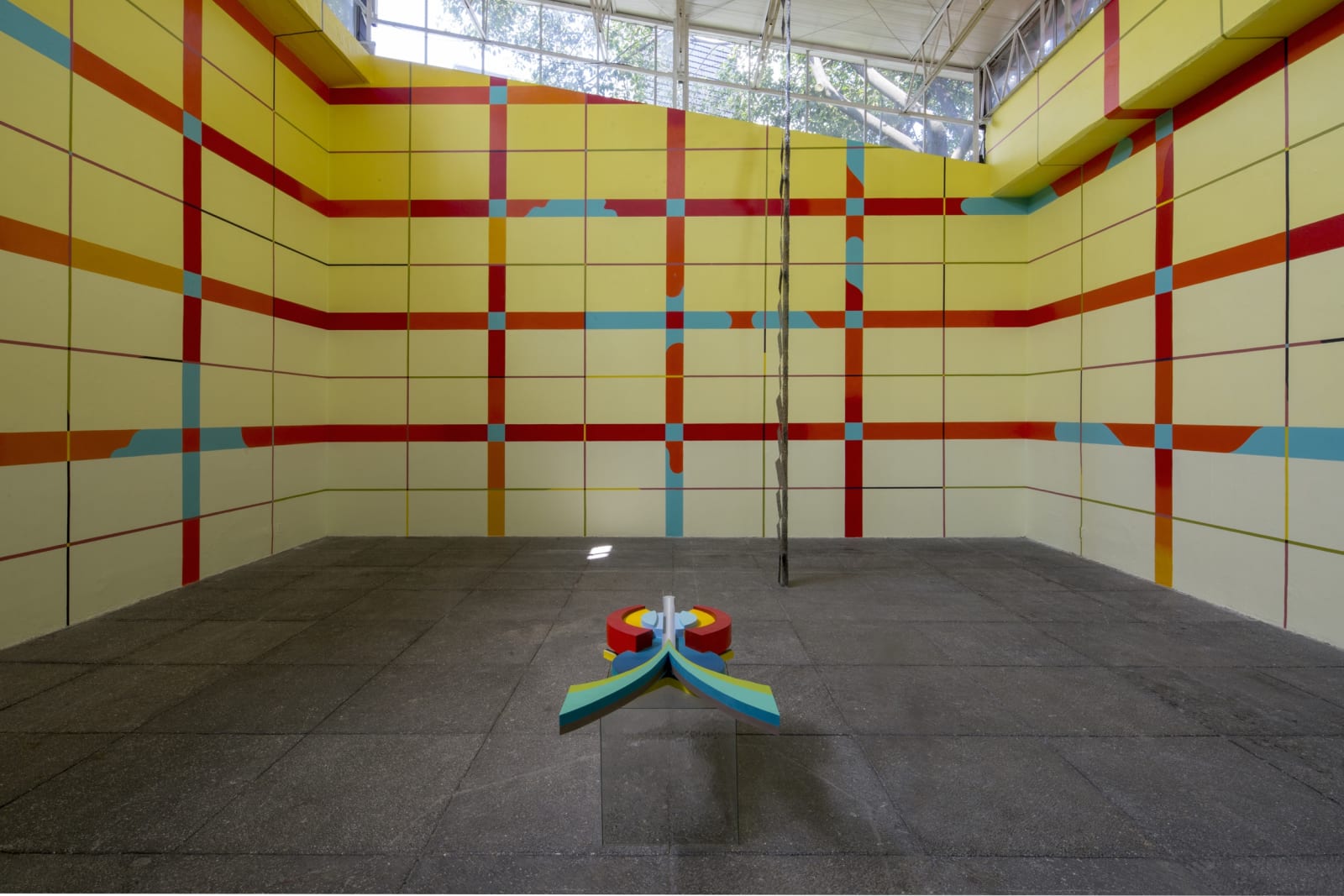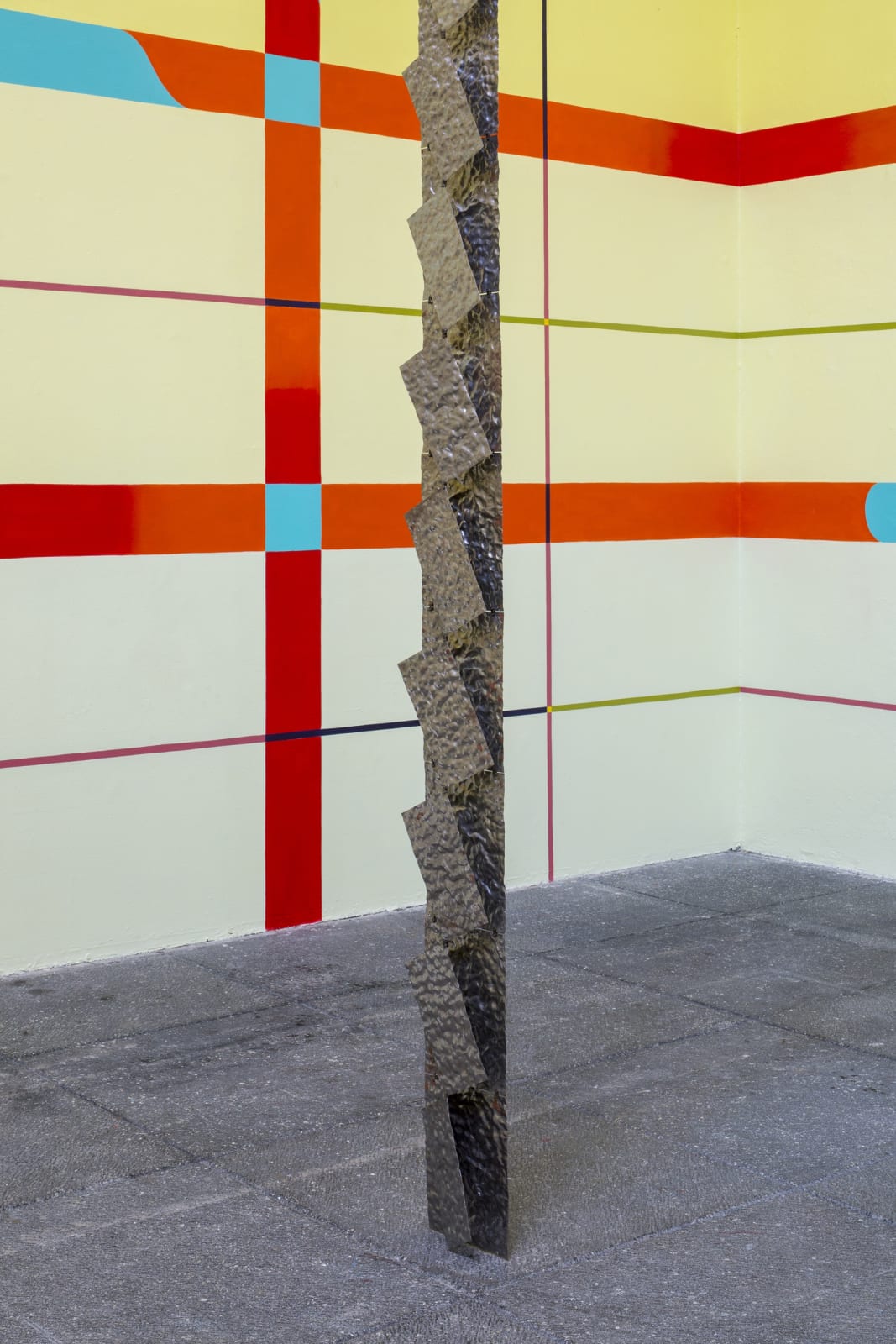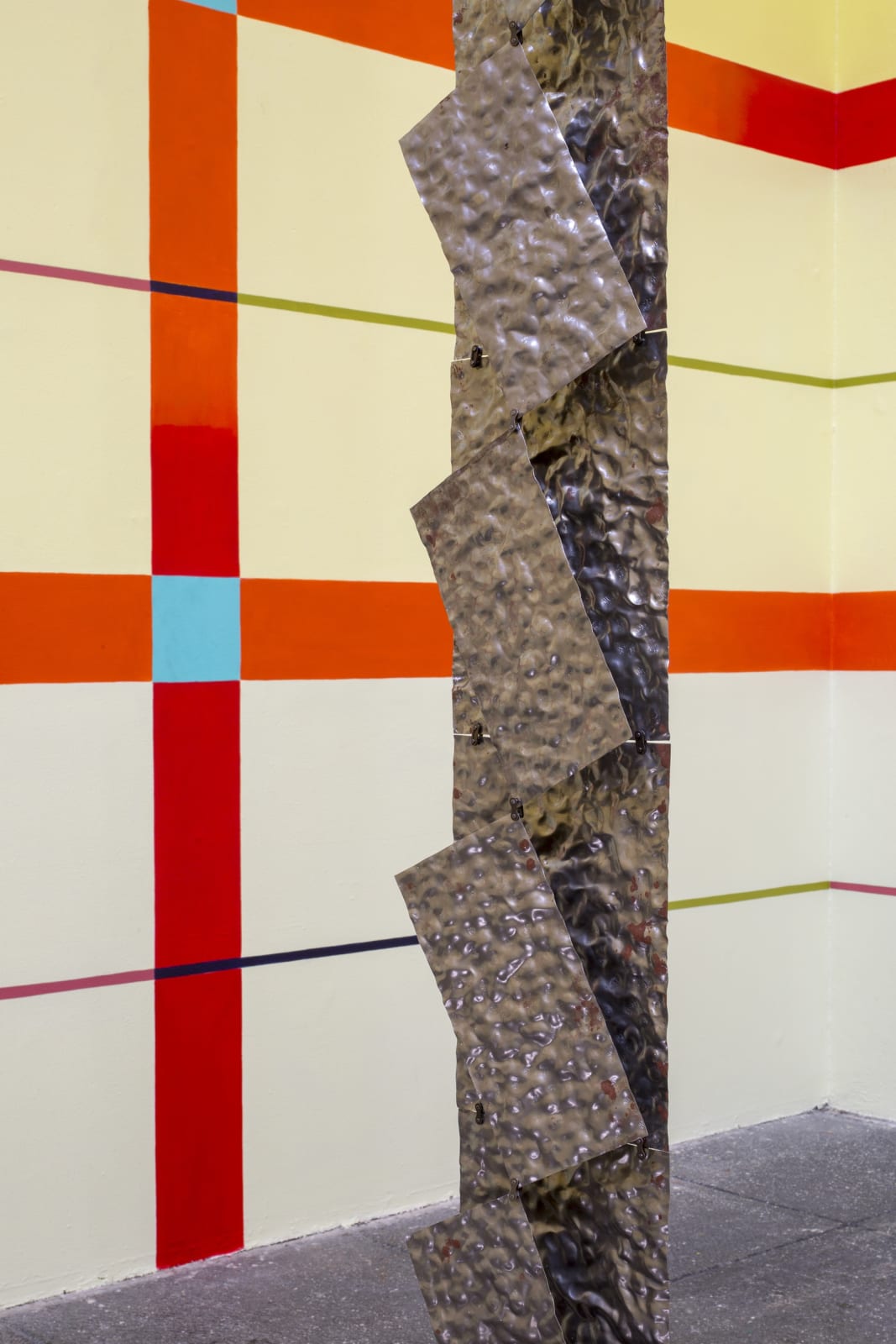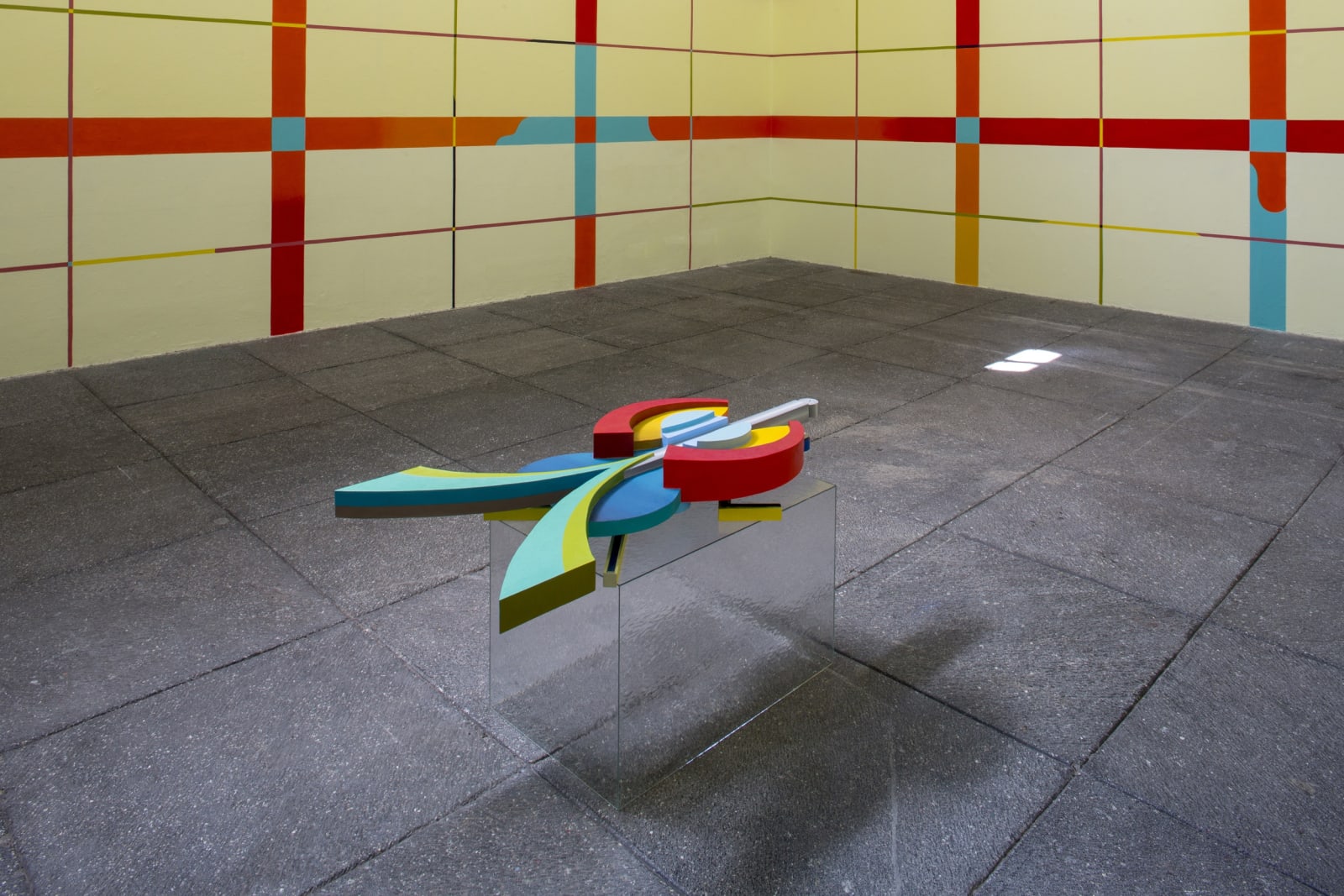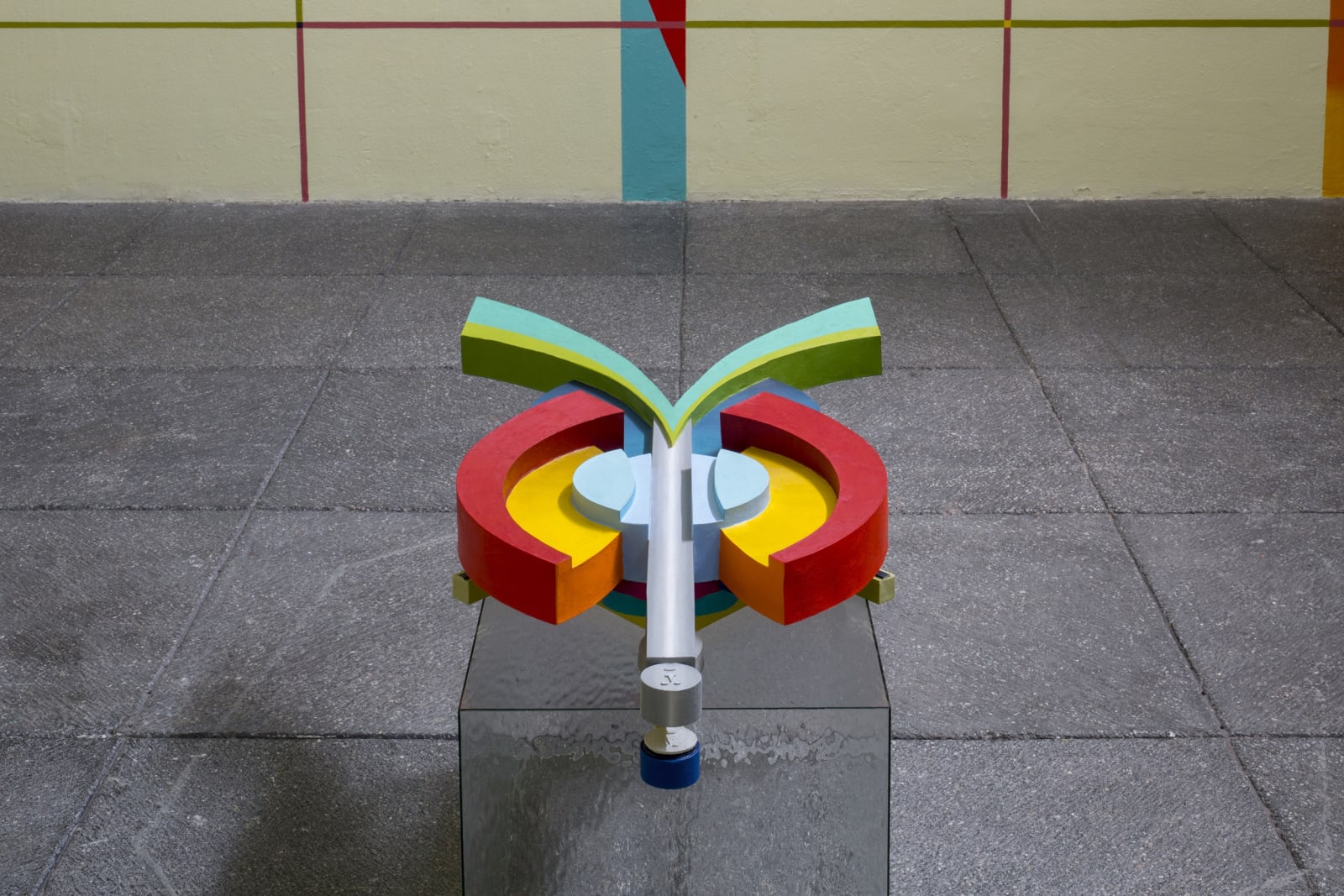Rodrigo Hernández: ¿Qué escuchó cuando escucho el discurrir del tiempo?: Sala de Arte Público Siqueiros, Mexico City
¿Qué escuchó cuando escucho el discurrir del tiempo? is a new production by Rodrigo Hernández (Mexico City, 1983) in which he disarticulates the idea of time as a linear phenomenon, focusing on the perception of it as well as its abstract and relative qualities. Hernández takes into account physical, philosophical, psychological and literary reflections about time, understanding it as a multidimensional network in which memory, the now and the expectation of the future are intertwined, as in a being a current of consciousness is formed. In this environmental essay, time is not conceived as a straight unidirectional and progressive line but as fragments or flows that converge and form a complex collection of structures.
The project occupies two spaces in the museum: the façade and the cube. The first can be seen immediately at a distance; a large undulating grid covering the front wall of the building that frames, in its interior, a small painting in which a character floats on a nebulous and dynamic fabric of lines and planes that interact with each other (perhaps a macroscopic vision of the exterior grid). The second space is entered, and in doing so we find ourselves surrounded by a mural that covers the walls of the cube in their entirety, integrating impeccably into its folds. The eye jumps from one side to the other trying to focus the gaze, to formulate a hypothesis about the nature of the composition and to distinguish the colours, which are transformed when they interact with each other; “The place of a thing is what is around it”.1] At the center of the space there is another character and a piece of hammered steel, suspended from the ceiling, which could remind us of a river, a snake, or a chain that superimposes, interrupts, or replicates - depending on the point of view - elements of the mural; perhaps like a line that has been detached from the dimension of the wall. This component introduces the notion of difference into the installation; time, for quantum physics, is but the measure of change.
1] Rovelli, Carlo; El orden del tiempo, Editorial Anagrama, Barcelona, 2018. The different beings with human faces that are repeated in Rodrigo Hernández’s work give us a sense of familiarity; it could always be the same subject that mutates and multiplies and which we follow in a long narrative, or perhaps they are self-portraits of the artist, perhaps they are a reflection of ourselves. This ambiguous intimacy is accentuated by the title of the exhibition combined in the first person of the singular, from an individual point of view but which remains undefined: What do I hear when I listen to the passage of time?
We all enter the same installation, but each one experiences a different temporality; for some this experience will return to memory occupying more time. But there will already be many times contained in this site: the time it took for each work to be conceived and produced; the history of its materials; the time it took to be transformed; the time in an intimate sense in which Rodrigo walked from observation to the conjugation of diverse references and styles into one, extremely personal and at the same time intentionally a-historical, joyfully full of contradictions. At the same time, time has passed since the visitor read the invitation and entered the museum, bringing with him an ingredient that is the basis of our identity as humans, and which is probably the one that is essential in the process of experience: memory. Thus we see that ‘universal’ time is disintegrated into a myriad of times of its own, and that each of these, in turn, fluctuates and is dispersed as in a cloud that does not represent a single time, but all times together.
The American psychologist and philosopher William James proposes a simple exercise: “Close your eyes and simply wait to hear someone tell you that a minute has passed. The full length of your leisure time seems incredible. You immerse yourself in its entrails as in the endless first week of a boat trip, and find yourself wondering how history has exceeded so many of these deadlines in its course”[1] It is not that far from “I stop and do nothing. Nothing happens. I don’t think anything. I listen to the passage of time”; a possible title for this exhibition, which was finally discarded.
* Translated text of Michele Fiedler
* With notes by Rodrigo Hernandez
